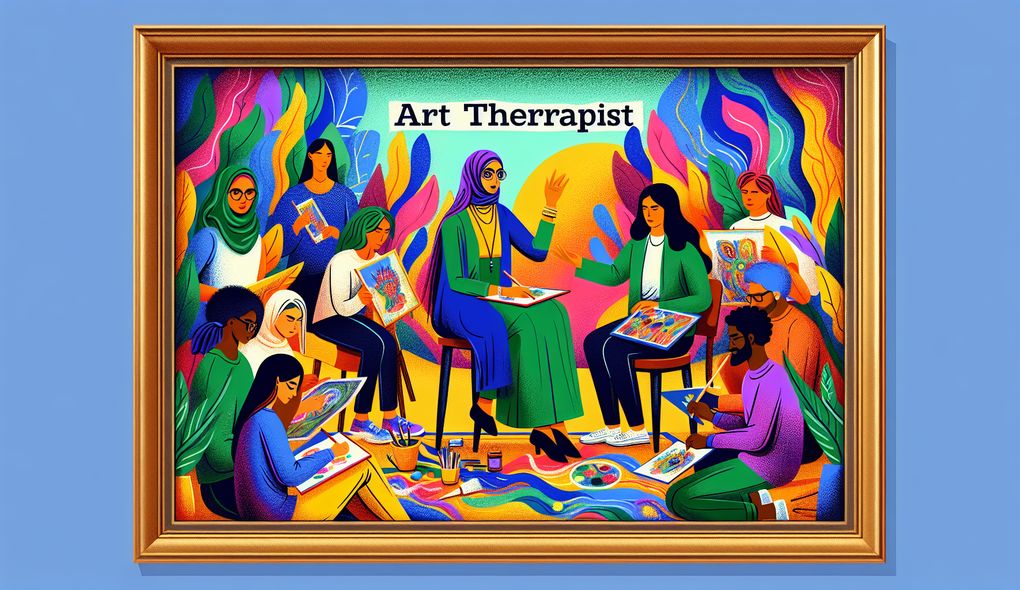Can you provide an example of a successful art-based program or intervention you have designed and facilitated?
INTERMEDIATE LEVEL

Sample answer to the question:
Yes, I can provide an example of a successful art-based program that I designed and facilitated. In my previous role as an art therapist, I developed a program called 'Expressive Healing' for clients dealing with trauma and stress. The program consisted of weekly group sessions where participants used various art mediums to express their emotions and explore their inner world. We focused on creating a safe and supportive environment where everyone felt comfortable sharing their art and discussing their experiences. Through this program, I witnessed significant positive changes in the participants, including increased self-awareness, improved emotional regulation, and enhanced coping skills.
Here is a more solid answer:
Certainly! One of the successful art-based programs that I designed and facilitated is called 'Art Journeys.' This program aimed to support individuals with anxiety and depression in a community mental health center. In collaboration with a multidisciplinary team, we developed a structured 8-week program that incorporated different art modalities such as painting, collage, and clay sculpting. Each session focused on a particular theme, allowing participants to explore their emotions and gain insights into their mental well-being. We provided guidance and support throughout the art-making process, encouraging self-reflection and expression. Additionally, I ensured personalized interventions by adapting the activities to meet the unique needs of each participant. As a result, the participants reported improved self-esteem, better coping strategies, and a sense of empowerment.
Why is this a more solid answer?
The solid answer expands on the basic answer by providing specific details about the art-based program. It includes the program's name, the target population, the duration, and the art modalities used. It also mentions the collaboration with a multidisciplinary team and the personalization of interventions. Additionally, it highlights the positive outcomes reported by the participants. However, it could further improve by discussing the evaluation process and the long-term impact of the program.
An example of a exceptional answer:
Absolutely! Let me share an exceptional example of a successful art-based program that I developed and facilitated called 'Art for Healing.' This program targeted adolescent survivors of domestic violence in a residential treatment center. I collaborated with therapists, social workers, and support staff to design a comprehensive 12-week program that integrated art therapy, trauma-informed care, and psychoeducation. Each session was carefully planned to address specific therapeutic goals, such as increasing self-compassion, developing healthy coping mechanisms, and building resilience. We utilized a range of art mediums, including drawing, painting, and sculpting, to facilitate self-expression and exploration. To evaluate the program's effectiveness, we conducted pre and post-assessments, measuring changes in symptomatology, self-esteem, and emotional regulation. The results were remarkable – the participants showed significant improvements in overall well-being, with reduced symptoms of trauma, increased self-esteem, and enhanced social skills. Moreover, the program had a lasting impact, as evidenced by follow-up assessments conducted six months later, displaying sustained positive outcomes in the participants' lives.
Why is this an exceptional answer?
The exceptional answer goes above and beyond by providing a highly detailed example of a successful art-based program. It mentions the program's name, target population, and the integration of various therapeutic approaches. It highlights the collaboration with a multidisciplinary team and the evaluation process, including pre and post-assessments and follow-up assessments. Furthermore, it emphasizes the remarkable results achieved, such as reduced trauma symptoms, increased self-esteem, and enhanced social skills. This answer covers all the evaluation areas mentioned in the job description and demonstrates the candidate's expertise in designing and facilitating art-based interventions.
How to prepare for this question:
- Familiarize yourself with different art modalities commonly used in art therapy, such as painting, drawing, sculpture, and collage.
- Research evidence-based approaches in art therapy, particularly those relevant to the target population you may work with.
- Develop a portfolio showcasing your past art-based programs or interventions, including details about the goals, activities, and outcomes.
- Practice explaining the therapeutic processes and techniques you have used in your previous work.
- Reflect on your experience working with diverse client populations and settings, and be prepared to discuss specific challenges and strategies used.
- Stay updated with the latest research and advancements in art therapy by attending workshops, conferences, and continuing education courses.
What are interviewers evaluating with this question?
- Relevant experience in art therapy
- Design and facilitation of art-based interventions
- Understanding of therapeutic processes and techniques
- Ability to work with a variety of client populations and settings

